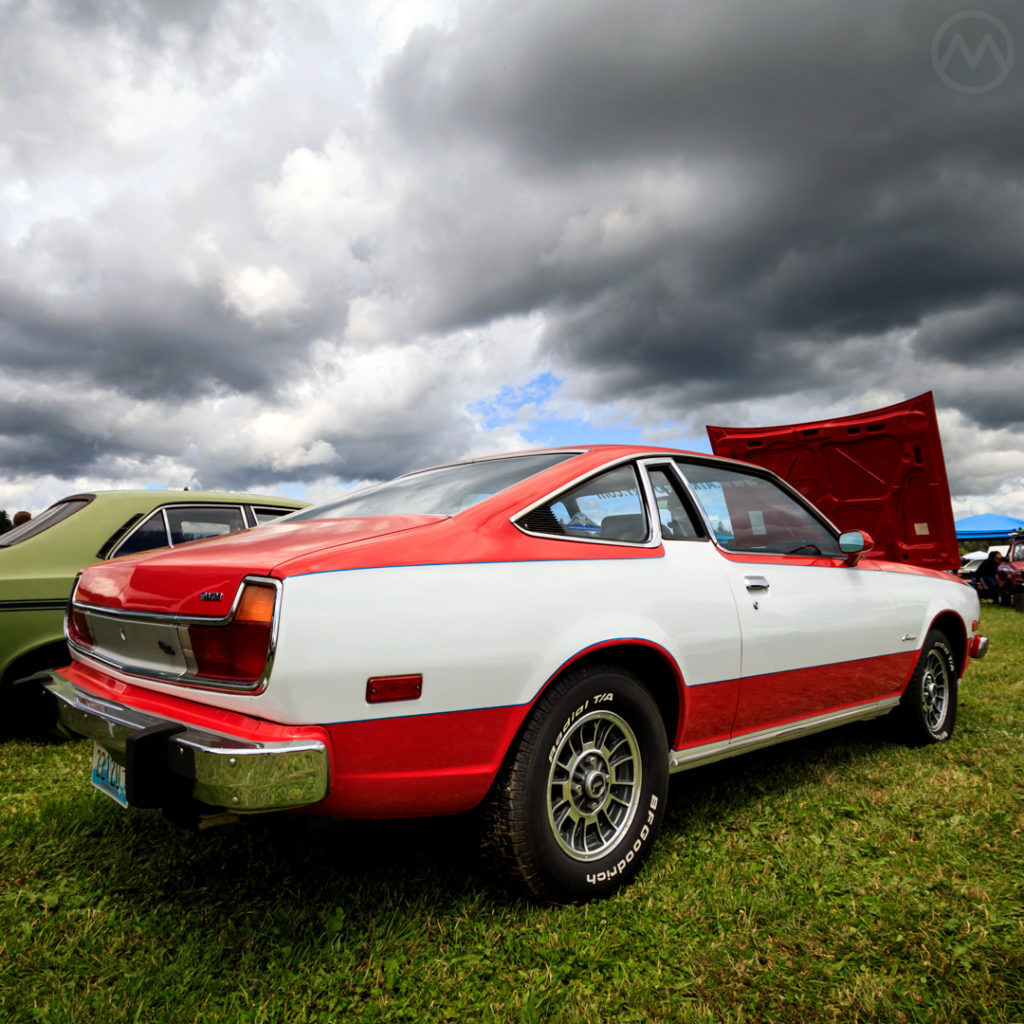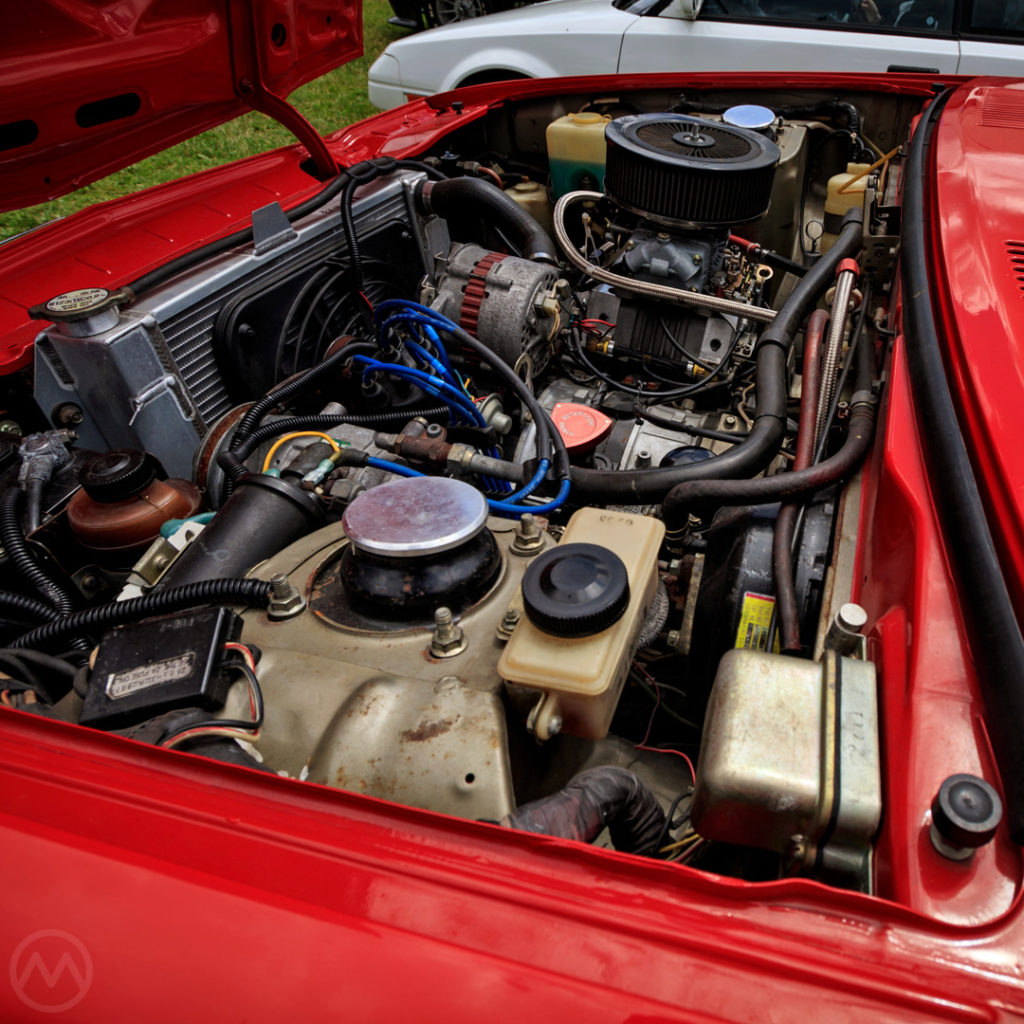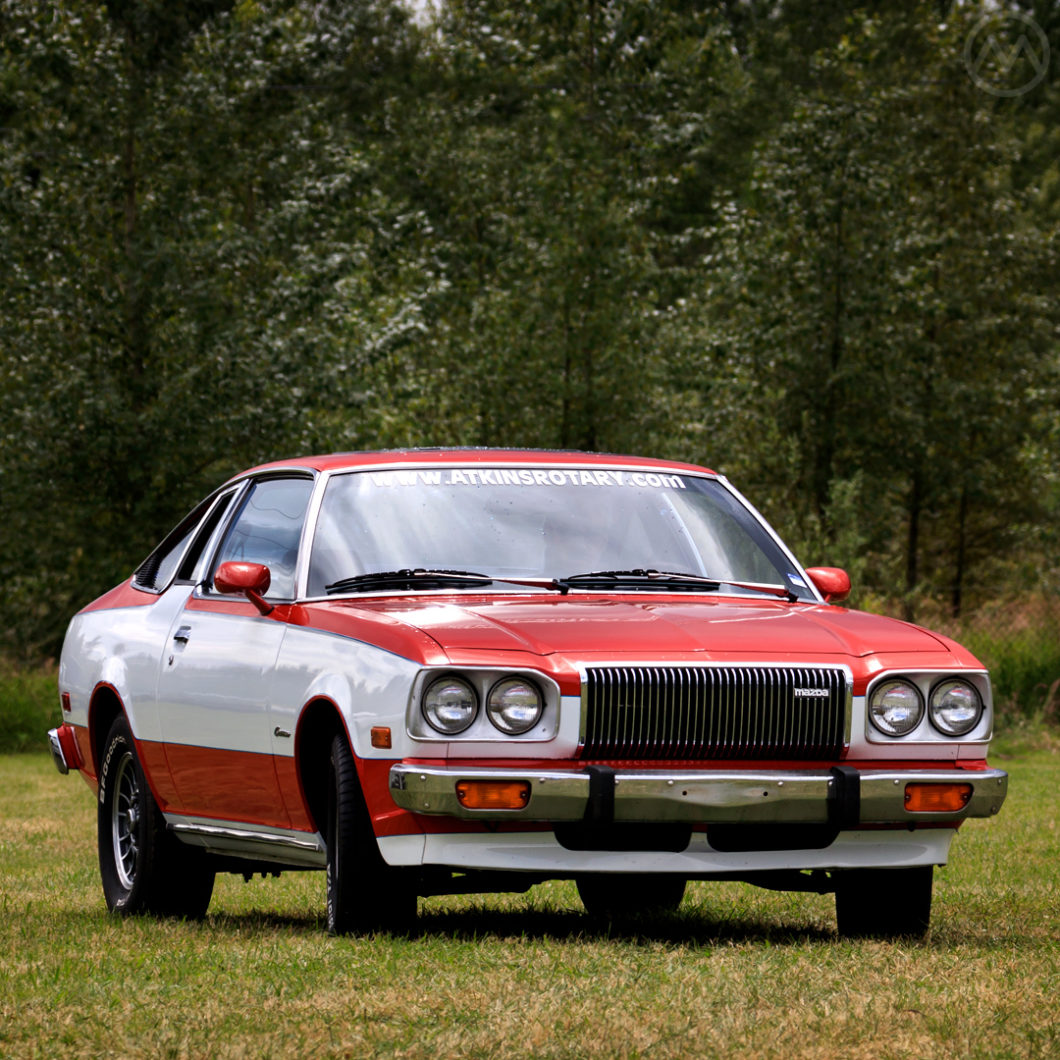It was planned when Mazda was riding high on Rotary success in the early 1970s. That decade was the golden age of “personal coupes,” be they Toyota Celicas or Lincoln MkIVs, so it made perfect sense that Toyo Kogyo should offer one of its own.
Dusting off the legendary Cosmo name from its original 1960s Rotary supercoupe, Mazda’s AP Cosmo bowed in 1975. By then, of course, OPEC had knocked the wind out of the Rotary’s sales and the company as a whole was on very shaky ground.
In hindsight, it seems weird that under those circumstances, they should choose to debut a big niche-market coupe, but lead times don’t always cooperate with events. The new Cosmo would do okay in Japan, but elsewhere the car found few takers and some of the choices that made sense in Japan worked against the car elsewhere.
The Seventies Cosmo
First, although it wore the Cosmo name it was absolutely nothing like the original 1967-72 L10A/L10B Cosmo other than having four wheels and a Rotary heart.
The AP (short for Anti-Pollution) Cosmo was intended to be a much more mass-market affair and rather than being experimental, it was based on familiar pieces. Indeed, it sold many thousands more cars than the handbuilt original even if it was not a good seller overall. Instead of being a moonshot, it was aimed directly at the gap between cars like the Celica and Japan’s larger 2-door hardtop luxury cars like the Nissan Cedric and Toyota Crown.
In this market, Mazda’s choices for the car make sense. 1970s Japanese cars often used very American styling themes – like the 1969-70 Mustang Fastback inspired Toyota Celica mk1 Liftback. This trend was even more true for larger, more opulent JDM cars.
Sculptural body sides, opera windows, frilly details – large Japanese cars in that decade were perfectly in tune with American’s gilded full-sizes. Some of these cars even found their way back to the USA, like the X30 Toyota Cressida, but never the biggest ones.

The Cosmo was a relatively clean looking car compared to its opposite numbers at Nissan and Toyota, but had some distinct Opel and Chevy overtones. Originally a vaguely fastback coupe in the Opel Manta B/Chevy Vega hatch mold, it had a waterfall grill up front and an unusual greenhouse with an architectural “opera window” (sort of) built into the chrome of the greenhouse.
In terms of JDM tastes, it was perfectly contemporary as hybrid of sporty car and “personal luxury” (which is what the ads emphasized) in 1975.
It was based on Mazda’s largest mainstream car, the LA-series Luce, and came either as the Rotary (12A or 13B, the latter the only U.S. engine) or, surprisingly (given the original Cosmo’s close association with the Rotary), with piston engines. At first it came as the 1.8L Cosmo 1800AP and later the 2.0L Cosmo 2000, sometimes sold as “Mazda 121” in export markets.
Familiar Luce pieces lurked under the entirely new body, but also got a new five-link rear suspension and much plusher interiors. It was small enough to have sporting pretensions but was more of a boulevardier to drive, which was fine given the car’s mission at home.
In Japan, tax laws made the big car cost effective thanks to the small Rotary. The engine had big car power but thanks to displacement, fell into small car classifications. It was also stylish and new – and despite Mazda’s relatively small size compared to its rivals, style always counts with coupes.
The AP Cosmo Abroad
Everywhere else though, the things that made it work in Japan were a hindrance.
To U.S. buyers, the Cosmo looked very American. That put off some import buyers. At the same time, it was smaller and more expensive than a bigger Monte Carlo or Firebird, which American buyers flocked to. You could easily have paid $1000 less for a Camaro or $2500 less for the similarly-sized Chevy Monza.
The closest analog for most American customers was the Celica, almost $2000 cheaper. Mazda’s own RX-4 coupe was also cheaper and – thanks to the heavy body added to the Cosmo, faster too. Europeans were similarly baffled.

The “AP” part of the name stood for “Anti Pollution,” which was related to the thermal reactor system Mazda used to make the car complaint with stringent new Japanese emissions regs.
That mattered in the U.S., too, but by 1975 many U.S. customers were wary of Mazda’s rotaries because of fuel consumption (they were small cars, but had big-car thirst) and Mazda’s early side-sealing troubles and the warranty claims they generated, though these problems were mostly cured by the time of the AP Cosmo.
As a result, the car sank like a stone in export markets and was JDM only from 1979-81.
Not offered in the USA, there was also a notchback version of this Cosmo, with an optional window delete for a 1965-Thunderbird style look. It was probably no bad thing that the notch was not offered in the USA – from a side view, it looked very similar to a Chevy Monza Town Coupe, a car thousands of dollars cheaper.
Though not a bad car overall, it wasn’t an overachiever and this generation of Cosmo (sometimes RX-5) is probably the least-loved of the Rotary classics today, but it still has a fan base (we’ve always liked the styling), particularly in Japan but also in America. Among the latter group is Atkins Rotary, a U.S. specialist in parts for 12A and 13B classics who own this particular Cosmo.


Bought and still own cosmo new. After WALL·E Mazda drove a stock cosmo from nj to Daytona and finished 5th , then drove back to nj. I had to own one.
Best ride in my collection. A lot more car than most people are aware of, mechanical items like suspension and brakes.